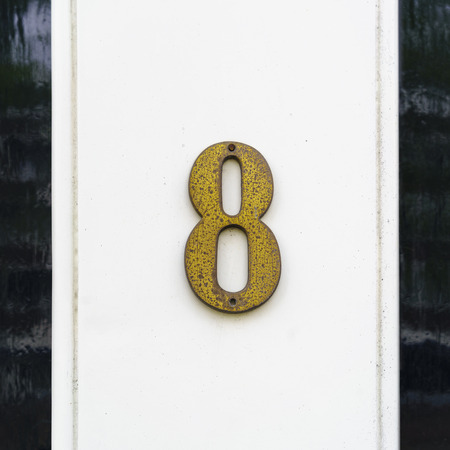Introduction: Palmistry’s Curious Place in Modern British Culture
Palmistry, or the reading of palms, occupies a fascinating and sometimes contradictory position within contemporary British society. Once relegated to the status of a whimsical parlour game during the Victorian era, palmistry has managed to both persist and evolve alongside the shifting tides of culture and belief in the UK. While many still associate it with fortune-telling at village fairs or a light-hearted diversion at social gatherings, there is a noticeable shift underway: palmistry is increasingly being reinterpreted as a tool for self-reflection and personal insight rather than mere prophecy. Today, a growing number of Britons—curious sceptics and open-minded enthusiasts alike—find themselves drawn to the lines etched on their hands not simply for what they might foretell, but for what they might reveal about character, temperament, and emotional patterns. This journey from Victorian novelty to modern self-exploration mirrors wider trends in Britain’s engagement with alternative practices, where tradition intersects with new perspectives on identity and well-being.
Historical Footprints: The British Fascination with Palmistry
Palmistry, also known as chiromancy, has woven itself into the fabric of British cultural history in ways both subtle and profound. The art of reading palms can be traced back to ancient civilisations, but its distinct popularity in Britain flourished during the Victorian era. This period was marked by an intense curiosity for the mystical and arcane, fuelled by a society grappling with rapid industrialisation and scientific advancement. In parlours across the country, palmistry became a fashionable pastime—entertaining guests and igniting conversations about fate, fortune, and character.
The Victorian fascination with palmistry was not merely a fleeting trend. At a time when spiritualism and occult practices gained mainstream acceptance, palm readers were often invited to high-society gatherings. Manuals on palm reading circulated widely, promising readers insight into their future prospects or hidden talents. The appeal lay in its blend of entertainment and introspection—a means to explore one’s personality under the guise of destiny.
Following its Victorian heyday, palmistry experienced waves of revival throughout British history. Each resurgence reflected broader societal changes. For instance, during times of uncertainty such as the interwar years or the countercultural movements of the 1960s and 1970s, interest in alternative wisdoms like palmistry grew once again. These revivals often mirrored a collective desire for meaning or self-understanding beyond conventional norms.
Key Eras in British Palmistry
| Era | Context | Palmistrys Role |
|---|---|---|
| Victorian Era | Rise of spiritualism; fascination with the occult | Popular parlour game; social entertainment |
| Interwar Period | Post-war uncertainty; seeking guidance | Personal insight; coping mechanism |
| 1960s-1970s | Counterculture; search for meaning | Self-exploration; rebellion against convention |
| Contemporary Britain | Interest in wellbeing and psychology | Personality insight; personal development tool |
Cultural Legacy and Modern Perceptions
The enduring presence of palmistry in Britain points to more than mere superstition. Its historical footprints reveal how Britons have turned to this practice in times of transition or curiosity. Today’s approach may be more sceptical or grounded in psychological frameworks, yet echoes of those earlier fascinations remain embedded in British culture—making palmistry both a relic of the past and a living tradition.

3. From Parlours to Instagram: Evolving Platforms
Palmistry in Britain has undergone a remarkable transformation over the last century, moving far beyond its roots as a parlour amusement or Victorian curiosity. In days gone by, palm readings were often private affairs conducted in dimly-lit drawing rooms, with close friends or family members seeking entertainment or solace from a trusted reader. These gatherings, tinged with mystery and social intrigue, embodied the reserved yet playful spirit of British society at the time.
However, as technology advanced and cultural attitudes shifted, so too did the practice of palmistry. The arrival of mass media – particularly print magazines and later television – introduced palmistry to a wider audience across the UK. No longer confined to secretive circles, palm reading found its way into advice columns, Sunday supplements and late-night talk shows, often portrayed with a blend of scepticism and fascination characteristic of British humour.
The most dramatic shift has occurred in the digital era. Today’s palmists have embraced social media platforms such as Instagram, TikTok and YouTube to share their knowledge, offer virtual readings and connect with an ever-expanding audience. Hashtags like #BritishPalmistry and #ModernMystic have helped foster online communities where enthusiasts discuss lines, mounts and personal experiences. The intimacy of the parlour has been replaced by the immediacy and accessibility of digital communication, allowing palmistry to reach people who might never have considered it before.
This transition has not been without its challenges. The move online requires practitioners to adapt their language and presentation style to fit short-form video or visually-driven content, while also navigating public scepticism that is often voiced more boldly in comment sections than in face-to-face settings. Despite this, many British palmists see digital spaces as opportunities for education and demystification rather than barriers to authenticity.
In embracing new platforms, palmistry in Britain has become both more visible and more integrated into everyday life. Whether through sharing meme-inspired palm reading guides or offering live Q&A sessions during lunchtime breaks, practitioners are finding innovative ways to blend tradition with modernity. This evolution reflects broader trends in British society: a growing appetite for self-understanding paired with a willingness to experiment with ancient practices using contemporary tools.
4. Hand in Hand with Science: Skepticism and Modern Attitudes
In contemporary Britain, palmistry is often met with a wry smile or a raised eyebrow. The British public’s relationship with this ancient art sits somewhere between polite amusement and outright scepticism. This attitude has deep roots in the nation’s cultural values—rationality, scientific inquiry, and a particularly British sense of humour all shape how palmistry is perceived today.
While many might recall palm reading as a parlour game at childhood parties or village fêtes, there remains an undercurrent of curiosity that quietly persists. Few are willing to admit to taking palmistry seriously, yet even fewer can resist glancing at their own lifelines during a quiet moment. Below is a closer look at the typical range of attitudes towards palmistry in Britain:
| Attitude | Common Traits | Typical Expression |
|---|---|---|
| Sceptical | Prefers evidence-based explanations, quick to dismiss mystical claims | “It’s just a bit of fun, isn’t it?” |
| Humorous | Makes light-hearted jokes, sees palmistry as entertainment | “Read my palm—will I win the lottery?” |
| Curious | Open-minded, enjoys exploring alternative perspectives discreetly | “I don’t believe it, but go on then…” |
| Traditionalist | Values folklore and customs, may have family stories about fortune-telling | “My gran used to say I had a lucky thumb!” |
The spread of these attitudes reflects broader British trends towards critical thinking and gentle mockery of anything seen as too earnest or unscientific. Yet, beneath the surface banter lies a subtle intrigue—a willingness to engage with palmistry, if only for the sake of self-reflection or social connection. In a society where science often takes centre stage, palmistry finds its place not as a rival to scientific understanding, but as an entertaining lens through which people occasionally examine themselves and their personalities.
5. Palmistry as Personality Insight
In contemporary Britain, palmistry has found a comfortable niche as a quirky tool for informal personality analysis. While few would claim to take palm readings as gospel truth, there is an enduring fascination with the way these lines and shapes on our hands might reflect aspects of our inner selves. Much like the popularity of personality quizzes in lifestyle magazines or online platforms, Britons often approach palmistry with a sense of curiosity and playful scepticism. It’s not uncommon to encounter palm reading at parties, festivals, or even team-building sessions, where it serves as both icebreaker and conversation starter.
This informal use reflects a broader British affection for self-exploration through light-hearted means. Rather than seeing palmistry as predictive fortune-telling, many participants treat it more like the Myers-Briggs test or a zodiac sign—a framework for thinking about one’s character traits and interpersonal tendencies. For example, someone might joke about being “a classic long-fingered thinker,” drawing from palmistry’s language to describe their introspective nature.
Moreover, this approach ties into the ongoing British love affair with quirky personality quizzes. There is something delightfully un-serious about asking friends to examine each other’s hands over a cup of tea or at the pub, blending tradition with modern social rituals. In this context, palmistry becomes another way of exploring identity and sparking meaningful conversations—often with a knowing wink and a dose of irony. The practice persists not because people are credulous, but because they enjoy the process of reflection and connection that it fosters.
6. Cultural Sensitivities and the Law
Palmistry’s position in contemporary Britain is shaped by a complex interplay of legal frameworks, cultural attitudes, and ethical debates. While palm reading has transitioned from a Victorian parlour amusement to a more nuanced tool for personality exploration, its public practice is not without scrutiny.
Legal Status of Palmistry in Britain
In the UK, palmistry operates within a patchwork of legislation. Historically, laws like the Fraudulent Mediums Act 1951 regulated fortune telling and psychic services, aiming to protect the public from deception. This act was repealed in 2008, replaced by consumer protection regulations that treat palmistry as a service—requiring transparency rather than banning the practice outright. Today, practitioners must avoid making unfounded claims or exploiting vulnerable individuals, particularly under the Consumer Protection from Unfair Trading Regulations 2008.
Regulation and Professionalism
Palmists who present their services as entertainment or as personal insights (rather than definitive predictions) generally remain within legal boundaries. Some professional palmists join trade organisations or abide by voluntary codes of conduct to foster credibility and reassure clients. The emphasis is often on self-discovery and character analysis rather than deterministic fortune-telling.
Entertainment vs. Spiritual Practice
Cultural perceptions differ widely: some view palmistry as harmless fun at events or parties, while others regard it as a form of spiritual guidance. In both cases, clear disclaimers are encouraged, ensuring clients understand the intended purpose—whether for entertainment or personal reflection. This helps mitigate potential misunderstandings and legal complications.
Ethical Considerations
The ethical landscape is equally important. Practitioners are encouraged to act responsibly, avoiding sensitive topics such as health or legal advice unless appropriately qualified. Respecting client confidentiality and autonomy is paramount, reflecting broader British values around privacy and informed consent.
In summary, palmistry in Britain today exists in a space where tradition meets modernity, requiring awareness of legal obligations, cultural expectations, and ethical responsibilities. Its continued presence depends on practitioners’ ability to navigate these sensitivities with openness and integrity.
7. Conclusion: The British Palm and Future Prospects
Reflecting on the journey of palmistry in contemporary Britain, it is clear that this age-old practice has undergone a quiet transformation. Once dismissed as nothing more than a parlour game or a quirk at funfairs, palmistry now finds itself woven into a broader fabric of self-exploration and personality insight. Britons, known for their pragmatic scepticism yet also an affection for the eccentric, have managed to keep palmistry alive by adapting its purpose and context. Today, it is as likely to be encountered over coffee in a London café as at a summer fete in Yorkshire.
Looking ahead, the future of palmistry within British society appears to rest on its dual appeal—both as light-hearted entertainment and as a reflective tool for self-understanding. In an era increasingly defined by personal development and mental wellbeing, palmistry offers a gentle, non-invasive means of sparking conversation about strengths, challenges, and individuality. This aligns well with the British tendency towards introspection, while maintaining enough distance from dogma to remain accessible and unthreatening.
The enduring presence of palmistry in the UK may also be attributed to its adaptability. As digital technologies facilitate new ways of connecting and sharing, virtual readings are gaining traction among younger generations. At the same time, traditionalists continue to value face-to-face encounters steeped in ritual and history. This blend of innovation and heritage ensures that palmistry remains relevant and responsive to evolving social needs.
However, it is important to acknowledge the limitations and ethical responsibilities inherent in any interpretive art. While palmistry can foster connection and spark valuable dialogue, it should never substitute for professional advice in health or serious life matters—a perspective widely shared by responsible practitioners across Britain.
Ultimately, the British approach to palmistry today mirrors the national character: open-minded but cautious, curious yet critical. Whether enjoyed as a form of entertainment among friends or engaged with more thoughtfully as part of a personal development journey, palmistry continues to offer both amusement and insight. Its future will likely be shaped by ongoing cultural shifts—embracing both tradition and change—as Britons continue to find meaning in the patterns etched upon their own hands.

